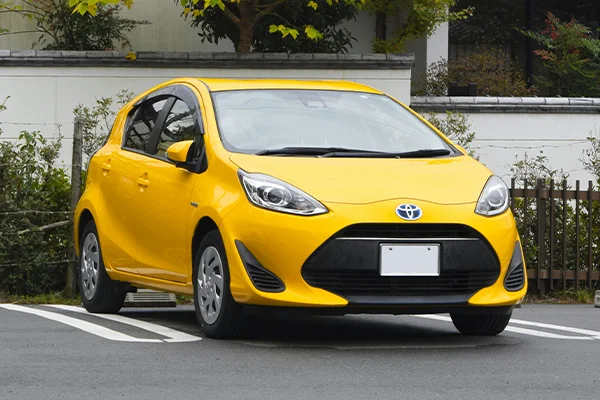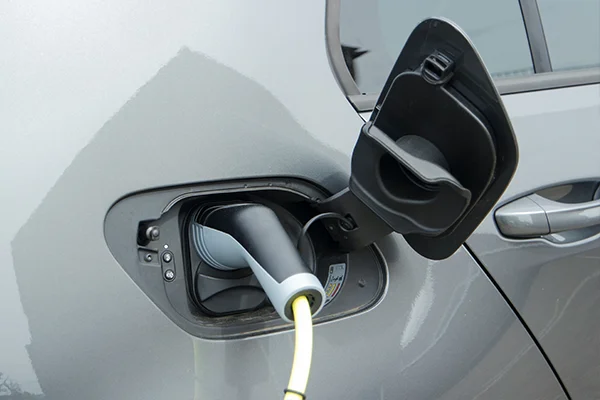Types of Hybrid Vehicles Explained
In the past few decades, hybrid vehicles have gone from a new and novel technology to being some of the most common cars you see on the road. And for good reason, as hybrids provide unmatched fuel efficiency while still retaining the practicality of a gasoline engine, making them an attractive choice for commuters, road trippers, and parents alike.
The Toyota Prius is likely the first vehicle that comes to mind when discussing hybrids, and while it was not the first hybrid vehicle to hit the road, it was the most influential. Following the Prius’ release in the U.S market in 2000, hybrids would rapidly gain a decent portion of market share, and make the Prius one of the most recognizable models on the road.
While all hybrid systems employ electric motors to provide assistance and increased MPG, not all hybrids are created equal. In this article, we’ll cover the types of hybrid systems used today and the pros and cons each of them bring.
Parallel Hybrid
A parallel hybrid system consists of an electric motor and gasoline engine that can each provide power to the wheels either individually or in unison.
As parallel hybrids can toggle between full-electric, full-gas, and a mix of the two, these systems are able to forgo the use of internal combustion at low-speeds. When more power is required, such as when reaching highway speeds, the engine will kick in to provide the needed assistance. Since the combustion engine is used quite sparingly, parallel hybrid systems provide significant increases in fuel economy.
One of the key features of parallel hybrids is regenerative braking, which uses the resistance against the electric motor during braking to generate additional power to be sent to the vehicle’s battery. This energy would otherwise be lost during braking with a traditional disc brake setup. If you’re a fan of Formula 1 racing, this is the same principle as the Kinetic Energy Recovery System (KERS) used on the current cars to recharge their hybrid systems.
Series Hybrid
Series hybrids similarly consist of an electric motor and gas engine, however the way in which they are used is quite different. Series hybrids rely on electric power for propulsion the entirety of the time, as the gas engine is not mechanically connected to the drivetrain, and only kicks in when the vehicle’s battery is low and requires a boost of range.
Series hybrid vehicles are quite rare in the North American market, but have been seen in BMW’s i3 REx, the Fisker Karma, and recently Ram’s 1500 Ramcharger.
Series-Parallel Hybrid
As the name implies, series-parallel hybrids fall somewhere between a series and parallel system, combining the two into a hybrid that can operate both as a full-electric with a range extender (series) or allow both the motors and engine to provide power in unison (parallel).
There’s no strict definition of what a series-parallel system looks like, only that it has the ability to operate in both modes. Series-parallel hybrids use internal sensors and computers to switch to the optimal setup for the current driving situation.
Since 2001, Toyota has employed their version of a series-parallel system on each generation of the Prius along with numerous other hybrid models.

Mild Hybrid
Mild hybrids incorporate an electric motor in a more conspicuous way, located somewhere in the powertrain between the engine and transmission. The motors used in mild hybrids are not powerful enough to propel the vehicle on their own, and instead just provide additional power on top of what’s produced by the internal combustion engine.
Similar to parallel hybrids, mild hybrids use regenerative braking to gradually add charge to the vehicle’s cell battery.
While the effect of the hybrid system may be less noticeable on a mild hybrid, these systems still provide a good increase in fuel efficiency and often performance, albeit not to the level of a full hybrid.
Plug-In Hybrids
All of the systems we’ve discussed previously generate their own power internally through either regenerative braking or through a generator run off of the gasoline engine. While this is great for providing you with a significant amount of increased fuel economy, it limits the range you get on electric-only propulsion.

Plug-in hybrids solve this issue by including a much larger battery for the electric motors, more similar to the size of an EV battery, which can be charged with a plug-in socket rather than just internal methods alone. Plug-in hybrids retain the practicality and familiarity of a gas engine while allowing you to go long distances on electric power alone.
For this reason, plug-in hybrids strike a comfortable middle ground for those who want an electrified vehicle without giving up the convenience of being able to quickly fill up at a gas station.
Hybrid Services in Tucson, AZ
If you own an import vehicle with any type of hybrid system, it’s important to find a repair facility that understands these unique vehicles inside and out. At Micro Import Service in Tucson, Arizona, our team has extensive experience in servicing all kinds of hybrid vehicles! Give us a call or schedule online today to secure your appointment with our hybrid experts.
